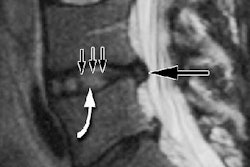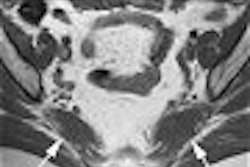Even on a genetic level, people who suffer from depression may be shouldering a heavy burden. First, they are carriers of a brain anomaly that makes them prone to the disorder. Second, parts of their brain may be stuck in a neurochemical loop, thwarting the ability to regulate negative emotions. Neuroscientists used multiple imaging modalities to study this genetic connection between anatomy, function, and emotion.
They focused on elements of the serotonin system (5-HT), including a 5-HT polymorphism (5-HTTLPR), and its variant, a 5-HTTLPR short allele (5-HTTLPR S). Serotonin is critical for the development of the emotional circuitry in the brain. Volunteers were imaged with blood oxygen level-dependent (BOLD) functional MRI and voxel-based morphometry (VBM) in this study.
"Previously, using functional magnetic resonance imaging (fMRI) we found that healthy, nondepressed s allele carriers show an exaggerated amygdala response to threatening visual stimuli," the group wrote in Nature Neuroscience (May 8, 2005).
The investigators were led by Dr. Daniel Weinberger from the National Institute of Mental Health (NIMH) in Bethesda, MD. Co-authors from the University of Pittsburgh and the NIMH's Genes, Cognition, and Psychosis Program contributed to this research.
For this study, 114 Caucasian subjects were enrolled. They underwent 3D structural MRI on a 1.5-tesla scanner using a T1-weighted SPGR sequence. BOLD fMRI was performed on a 3.5-tesla scanner using gradient-echo planar imaging. During the latter scan, the subjects completed a simple perceptual task to "robustly engage the amygdala."
Finally, the group measured functional connectivity, which they described as examining "the covariation across the brain with the activation in a region (volume) of interest. We used anatomical masks derived from VBM analyses to define these regions."
The results showed that 5-HTTLPR S carriers showed significant reduced volume of the perigenual anterior cingulated cortex (pACC) and amygdala, two areas that figure prominently in depression and negative emotion. In addition, structural changes were more pronounced in the pACC than in the amygdala, although there was no correlation between amygdala, pACC volume, and BOLD fMRI levels.
The authors noted that the amygdala and pACC formed a loop. "These interactions represent a functional feedback circuitry that regulates amygdala processing of environmental adversity," they explained. "These alterations are manifested in anxiety-related temperamental traits, possibly reflecting inadequate regulation and integration of amygdala-mediated arousal."
The process can eventually lead to greater vulnerability of individuals to persistent negative effect and depression, especially when faced with accumulating environmental adversity, they stated.
By Shalmali Pal
AuntMinnie.com staff writer
May 19, 2005
Related Reading
fMRI identifies link between alleles, amygdala in affective disorders, March 22, 2005
MRSI may be just the "tool" to diagnose bipolar disorder, November 30, 2004
Copyright © 2005 AuntMinnie.com


.fFmgij6Hin.png?auto=compress%2Cformat&fit=crop&h=100&q=70&w=100)





.fFmgij6Hin.png?auto=compress%2Cformat&fit=crop&h=167&q=70&w=250)











